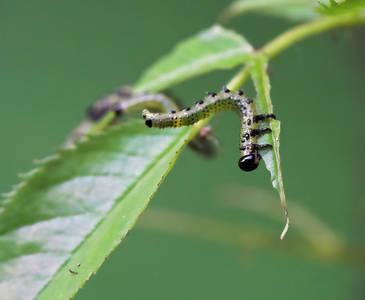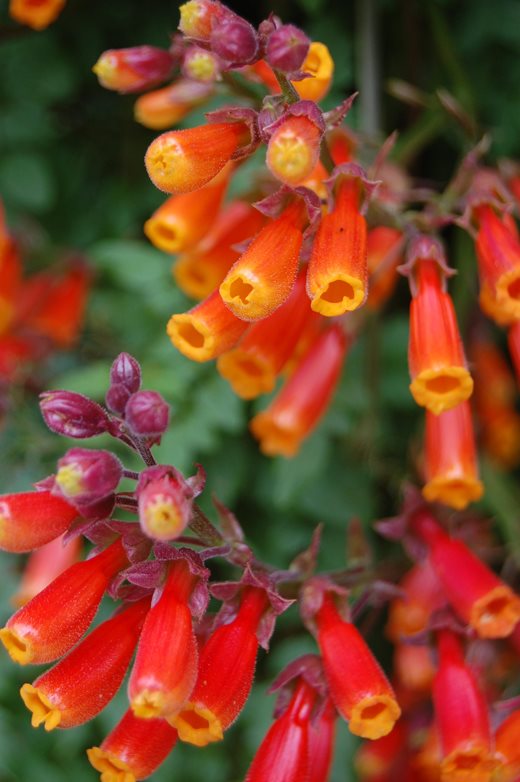In this guest blog, University of York PhD student Roberto Padovani spills the beans on his new research using the RHS Plants for Bugs plots

For as long as we've existed, humans have shaped the ecology of the world around us. Our ancestors began to alter the natural environment as soon as they could throw a spear, and quickly contributed to the extinction of the woolly mammoth and countless other large mammal species
1.
In more recent times man’s influence on global ecology has increased dramatically. The earth has entered a new geological age (the
Anthropocene), during which human activity has been the dominant influence on climate and the environment
2.
One characteristic of the Anthropocene is the creation of countless novel environments which have been rapidly colonised by a variety of species. These novel environments allow species to establish in new regions without displacing native species. This is contributing to a paradox in modern ecology. Despite the fact that global biodiversity is decreasing biodiversity in many regions across the world is increasing
3.
My PhD aims to investigate the ecological factors that govern biodiversity gains, as current scientific focus is almost exclusively on biodiversity loss.
 The Plants for Bugs plots at Wisley provide the perfect arena for the field research component of my project. Structurally matched triplets of plants will allow me to compare herbivorous insect diversity between native, closely related near-native, and more distantly related exotic plants. The near-native and exotic plants (such as the Chilean glory flower - pictured right) would not be growing here if not for human agency, meaning that to the insects feeding on them they represent novel environments created by man.
The Plants for Bugs plots at Wisley provide the perfect arena for the field research component of my project. Structurally matched triplets of plants will allow me to compare herbivorous insect diversity between native, closely related near-native, and more distantly related exotic plants. The near-native and exotic plants (such as the Chilean glory flower - pictured right) would not be growing here if not for human agency, meaning that to the insects feeding on them they represent novel environments created by man.
By comparing the insects found on the plants I hope to answer some key questions such as:
- Are the insect communities on the native and near-native plants in each triplet more similar than those on the native and exotic plants?
- Are there fewer insect species on the non-native plants compared with the native plants?
- Do the types of insects (e.g. native vs non-native/generalist diet vs. specialist diet) differ on the native and non-native plants?
In addition to the field work at Wisley I will be making use of national databases containing historical and geographical information on numerous native and non-native plant species and the insects found on them. These include the BRC (Biological Records Centre) database of insects and their food plants, the RHS database of insects on horticultural plants, and the GB non-native species information portal. A citizen science project will also be developed to allow me to engage the public in my research, and to widen the geographic scope of my field sampling.
Roberto Padovani
@RJPadovani
References
1. Sandom, C., Faurby, S., Sandel, B. & Svenning, J.-C. 2014. Global late Quaternary megafauna extinctions linked to humans, not climate change.
Proc. Biol. Sci., 281, 20133254.
2. Lewis, S. L. & Maslin, M. A. 2015. Defining the Anthropocene.
Nature, 519
, 171-180.
3. Thomas, C. D. 2013. Local diversity stays about the same, regional diversity increases, and global diversity declines.
Proc. Natl. Acad. Sci., 110, 19187-19188.
Image credits: Image 1. Garden & Flowers.com. 2015.
Caterpillar on Primrose. Available at: http://www.gardenandflowers.com/facts_7762884_eating-primroses.html [Accessed 10/03/16
Image 2. Davis Landscape Architecture. 2012.
Eccremocarpus scaber Flower (05/05/2012, Kew gardens, London). Available at: https://davisla.wordpress.com/2012/06/10/plant-of-the-week-eccremocarpus-scaber/ [Accessed 10/03/16]

